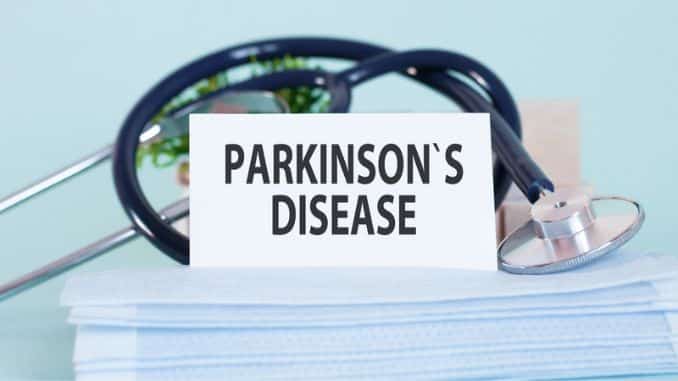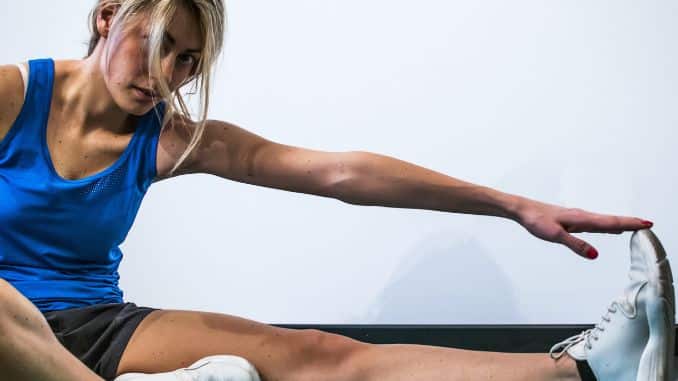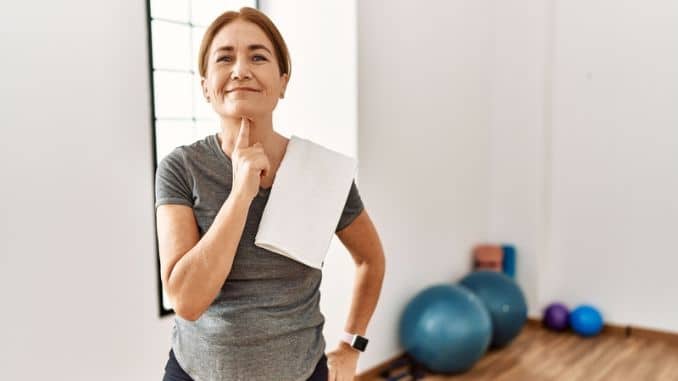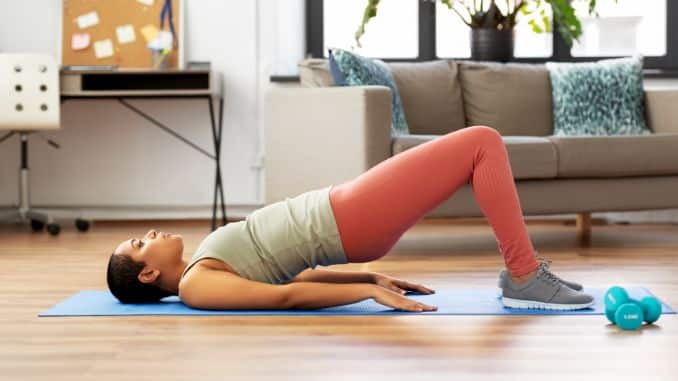
Parkinson’s Disease (PD) or also known as Paralysis Agitans, is a progressive neurodegenerative disease that mainly affects the movement of the person. To avoid this, you should do simple stretches for Parkinson’s Disease.
Due to the pathologic degeneration of the substantia nigra, which is responsible for producing your dopaminergic cells. A decrease in dopaminergic cells will result in imbalance activity in the brain, leading to impaired movement and other symptoms of Parkinson’s Disease. The reason why degeneration of the substantia nigra happens is still unknown, but researchers also factored in the contribution of genetics and environmental triggers.
In most cases, this condition arises at the later stage of life. It usually peaks at around 60 years old, but there are cases where it is present in adults below sixty, called Early onset PD. The symptoms of PD vary differently from one person to another.
Cardinal Signs Present in All Diagnosed Parkinson’s Disease Patients
1. Bradykinesia
Slowed movement is one of the symptoms of PD. You may notice that you walk slower when you initiate the action. People around you may also see that you don’t swing your arms when walking or look like you have a ‘poker face’ or decreased facial expression. This often results in frequent fall injuries.
2. Tremor
This is the most common symptom and earliest to arise. It starts at the distal limb, primarily the hands and the fingers. Even at rest, it can tremble and shake but can be suppressed when sleeping.
3. Rigidity
Any body part can feel rigid or stiff, even at rest. This increases the limitation of the range of motion and contributes to a decrease in arm swing. This appears in the later stage of the condition.
4. Postural deformity
Patients with Parkinson’s disease often have a stooped posture with protracted shoulders, rounded upper back, forward head, and decreased lumbar lordosis. Posture changes can contribute to misaligning the line of gravity, making them prone to falling.
Other symptoms include:
- Micrographia or abnormally shrinking or camped handwriting.
- Slurred Speech
- Balance problems
- Depression and Anxiety
- Memory problems
Pharmacologic treatment for Parkinson’s disease mainly revolves around using levodopa-carbidopa drugs. It is usually administered at the early onset of the symptoms because it helps with a movement disorder and resting tremors. Although this disease has no cure, treatment options, such as medication and rehabilitation, are provided to delay the onset of other symptoms and manage the other complications.
Rehabilitation therapy is prescribed to manage the musculoskeletal affectation of PD. Studies have shown that adherence to exercises significantly improves managing the symptoms of Parkinson’s disease. The appropriate intensity and muscle activation can minimize muscle damage and enhance the individual’s overall strength capacity. It is essential to coordinate with your doctor to make a collaborative set of goals so that proper training and exercises or stretches for Parkinson’s disease will be given.
Below are some simple stretches for Parkinson’s Disease patients that can benefit from:
Parkinson’s Disease Stretching Exercises
1. Chest Muscle Stretching
Begin in a sitting position, with both hands cupping the back of your head, and ask a family member to slowly pull the elbows back until you feel a stretch on your chest area to your axilla. Hold this position for 15 seconds and then do it for 3 sets.
In case you don’t have anyone to help you with this, you can do this in a standing position in the corner of your house, with feet slightly apart. Both hands pressed against the wall in a T-position, slowly push down your body towards the wall until you feel a stretch on your chest area to your axilla. Do this position with 15 seconds of hold and 3 sets.
2. Calf Muscle Stretching
You can do this by sitting on a bed with one leg dangling down and the other resting on the bed. Grab a towel and put it under the ball of the foot of the leg while sleeping on the bed. Slowly pull both ends of the towel towards you until your toes point at you, and you can feel a stretch on your calf. Hold this position for 15 seconds and do it 3 times on each leg.
You can also do this while standing in front of a wall. Get closer to the wall, and put your foot against it while the toes point upwards. Slowly move closer to the wall until you feel a stretch on your calf. Hold this position for 15 seconds and do it 3 times on each leg.
Parkinson’s Disease Strengthening Exercise
1. Chin Tuck Exercise
Begin in a standing or sitting position. The neck should be in neutral alignment. You can push your neck backward and downward as if trying to squeeze a paper under your chin. You should be able to fill a contraction behind your neck and under your chin. If you’re having difficulty isolating your neck muscles, you can put both hands behind your head and serve as resistance as you push your head back. Hold this exercise or stretches for Parkinson’s disease for 7 seconds and repeat it 5 times.
2. Scapular Retraction Exercise
To initiate this exercise or stretches for Parkinson’s disease, you can do it in a standing or sitting position as long as your back is free to move. Imagine that there’s a hand in between your scapula. Try to squeeze it by retracting your scapula. You should feel a contraction on your middle back while doing so, hold that position for 7 seconds and repeat it 5 times.
3. Pelvic Bridging
Do this while lying down on a mattress facing upwards. Rest your hands at the side with your knees bent and feet flat off the floor. Then slowly lift your hips off the floor, squeezing your glutes at the end position. Repeat these stretches for Parkinson’s disease 10 times.
Cardiopulmonary Training
- Gait training in treadmills also helps increase the cardiopulmonary capacity of individuals with PD.
Balance Training
- Since fall injury is common among PD patients, it is essential to strengthening the core muscles that aid in balance and initiate balance training exercises that mainly include weight shifting, reaching, and perturbations in even and uneven surfaces.
- It is essential to perform this training under supervision and with proper progression to avoid more risk of injury. To learn more, you can click here for more information.
Parkinson’s Disease Home remedies
Since Parkinson’s Disease requires a multidisciplinary approach from medical practitioners, it’s also important to know what opportunities you can do in the comfort of your home to slow down the progression of this condition.
1. Diet and Nutrition
Your attending physician may suggest changing your diet to prevent unwanted weight loss. The doctor will advise you to consume foods that are high in protein, high in calcium (like dairy products), and rich in fiber, and increase fluid intake to reduce constipation and help your digestive system.
2. Medication
Your doctor will prescribe medication to help with your movement disorder, such as your tremors. Drugs like Levodopa and Carbidopa can help make this symptom less prominent. Aside from that, they will also recommend you take vitamin supplements such as Vitamin D, which can help you manage your symptoms and make you work at ease.
3. Relaxation or Meditation techniques
It’s known that relaxation can help PD patients not trigger their tremors and muscle rigidity. There are different ways to achieve this relaxation. You can listen to music used for meditation and do deep breathing exercises. You can also do Tai Chi as a form of exercise because this offers improvement in balance and stability.
4. Yoga
Incorporating yoga into your lifestyle can help you increase your flexibility and balance, which are significantly compromised in individuals with PD. Aside from that, it can also help you improve your mood and sleep better.
5. Massage Therapy
Gentle massage can help decrease stress and relaxation and target muscle stiffness and rigidity, common PD symptoms.
Outlook
Even though Parkinson’s Disease is a progressive disease without a cure, the life expectancy of individuals diagnosed with it is high and almost the same as those who aren’t diagnosed with it. Early detection of the condition and adherence to treatment can promote a better quality of life than those diagnosed much later.
However, the complications acquired secondary to PD significantly contribute to their mortality rate. Pneumonia is the most common complication, followed by falling-related injuries and choking, all developed due to weakness and compromised immune systems of a person with PD.
A lot of research and studies have been conducted to find a cure that can prevent the progression of this condition, and so far, there are some promising results in Gene Cell Therapy and Stem Cell Therapy. In the meantime, while waiting for the ground-breaking discovery of a cure that can prevent PD, it’s best to adhere to the available treatment to achieve a quality of life despite the diagnosis of Parkinson’s Disease.








